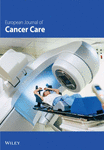Editorial
It is both timely and encouraging that more publications are appearing on cancer and the older person. At least 10 years ago, nurse specialists in the USA raised the profile of the older person affected by cancer, calling them the forgotten majority as the so-called demographic time bomb came into being. Increasingly ‘forgotten’ has become applicable all over the world with regard to the older person and cancer – throughout the cancer trajectory. Assumptions have been made about the older person's lack of interest of or enquiry for information about cancer, prevention of the disease and screening, as much as for treatment and care. Part of this is a reflection of ageism in society and therefore in health care. Part may be attributed to the biomedicalization of old age (thinking of ageing as a medical problem), concentrating on pathological processes rather than people. Why are older people categorized differently from any other adult just on the basis of their chronological age? The notions of ‘frailty’, ‘reduction of activity’ and ‘sensory losses’, demonstrated by the ageing process, immediately suggest the need for dependence and relative passivity from older adults compared with younger. That position is only one step from stigmatization, control and discrimination. Rather we need surely to view older people as potential contributors to each of us and to society. Our attitudes have enormous implications for health care in general and cancer care in particular.
On a palliative care note, some interesting new data and opinions have been debated on the WHO analgesic ladder, used as a gold standard for managing pain. Published in 1986, the analgesic ladder has been used widely and successfully within palliative care. Nevertheless, there have apparently been few studies to validate the scale (Porter-Sales et al. 2003), although the European Association for Palliative Care (EAPC) Research Steering Committee have considered revising the tool in the light of clinical experience. With the experience of 17 years in clinical practice, it may be time to be less cautious in moving up the ladder, as it were, from non-opioid analgesics to strong opioids, particularly with new knowledge of the therapeutic effects of some of the opioids. Interested readers should consult the EAPC website (http://www.eapcnet.org) for further details.




